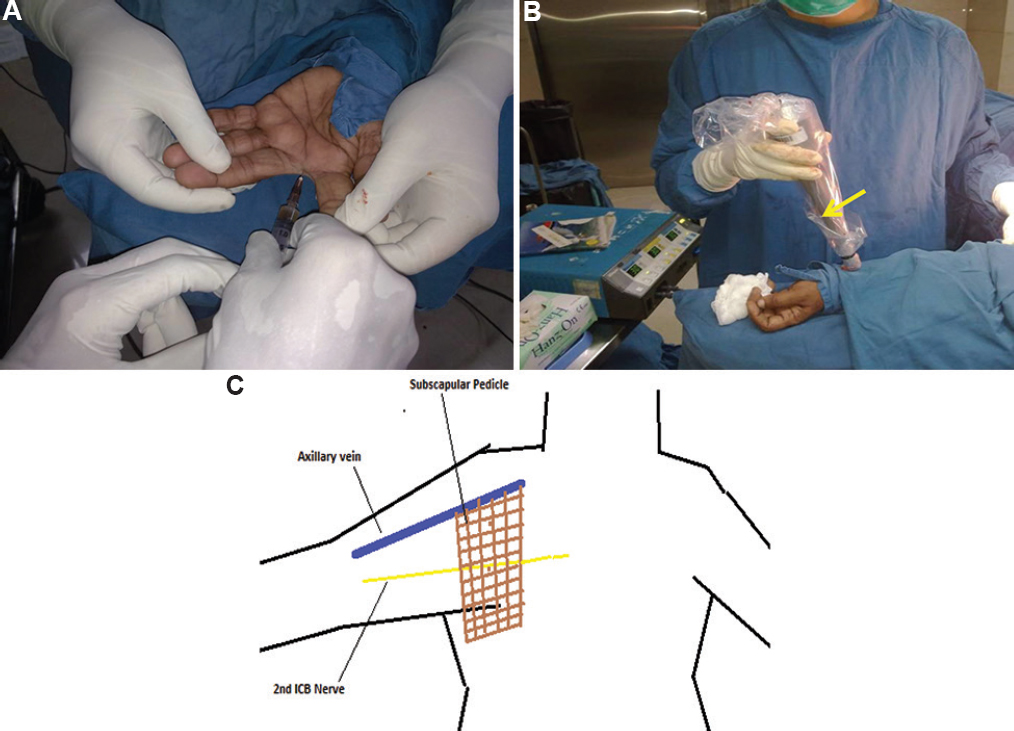Translate this page into:
Axillary reverse mapping with gamma probe: A concept to prevent lymphedema in early breast cancer patients
*For correspondence: ssundaram@aims.amrita.edu
-
Received: ,
This is an open access journal, and articles are distributed under the terms of the Creative Commons Attribution-NonCommercial-ShareAlike 4.0 License, which allows others to remix, tweak, and build upon the work non-commercially, as long as appropriate credit is given and the new creations are licensed under the identical terms.
This article was originally published by Wolters Kluwer - Medknow and was migrated to Scientific Scholar after the change of Publisher.
A 34 yr old female† with carcinoma right breast presented to the department of Surgical Oncology, Amrita Institute of Medical Sciences, Kochi, India, in December 2018, for right mastectomy and axillary dissection. Axillary reverse mapping (ARM) is an innovative intraoperative technique aimed at avoiding lymphedema in breast cancer patients. This technique identifies the arm draining lymph node by 99mTc sulphur colloid, which is different from the tumour draining node in the axilla. Once the ARM node was identified by radiocolloid injection (in interdigital web space, Figure A, B) and preserved, the upper limb lymphoedema did not occur due to preserved lymphatic supply. The ARM node was detected in the right axilla above the right second intercostobrachial nerve (Figure C) and was preserved. The patient completed six cycles of chemotherapy. On six-month follow up, the patient showed no lymphoedema. ARM is a promising simple technique; if implemented along with mastectomy, it may provide good quality of life in breast cancer patients.

- (A) Patient receiving filtered 99mTc sulphur colloid (37 mBq in 0.4 ml) injections in the 1st & 2nd interdigital webspace of the ipsilateral hand. 99mTc sulphur colloid travels through the superficial lymphatic channels of the upper limb and lodges in the 1st draining lymph node. (B) Handheld sterile draped gamma probe (yellow arrow) was manually moved along the arm to trace the radioactive counts from superficial lymphatic channels in the forearm, upper arm till the axilla to locate the ARM node i.e., node draining the arm (node showed ten times more radioactive counts than the background). (C) Graphical illustration of axillary region illustrating the three possible locations of axillary reverse mapping node (i) above the 2nd intercostobrachial nerve, (ii) just below the axillary vein or (iii) lateral to the subscapular pedicle.
Acknowledgment:
Authors acknowledge Dr D.K. Vijayakumar, Surgical Oncologist, Amrita Institute of Medical Sciences, Cochin, Kerala, India, for referring the patient.
Conflicts of Interest: None.





